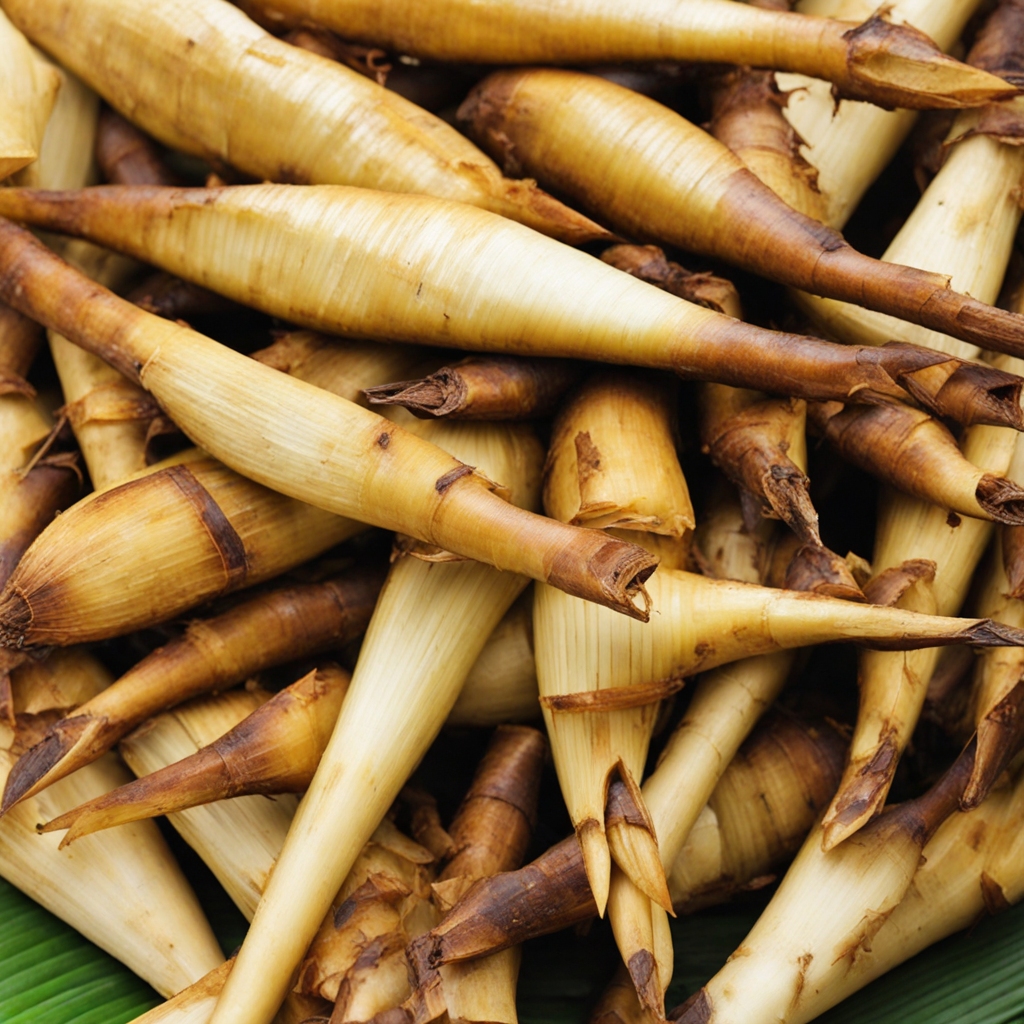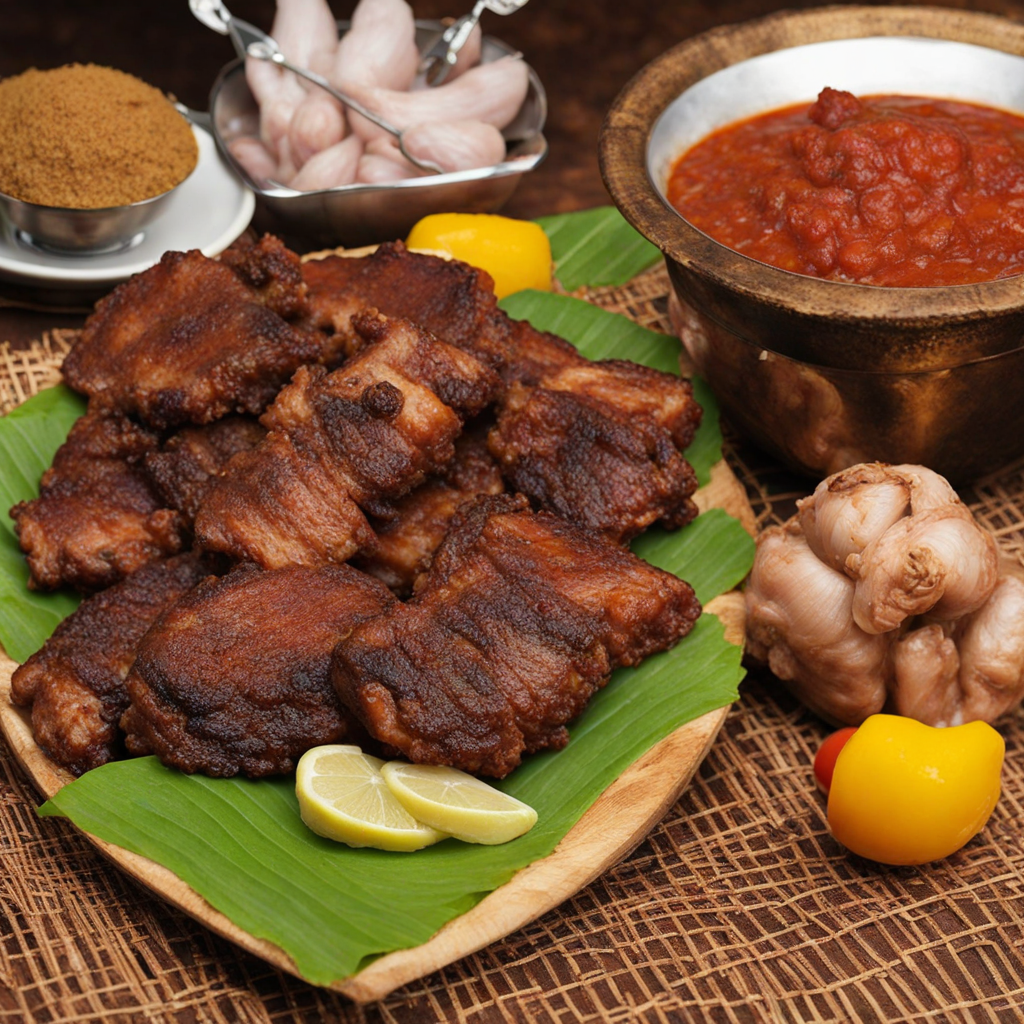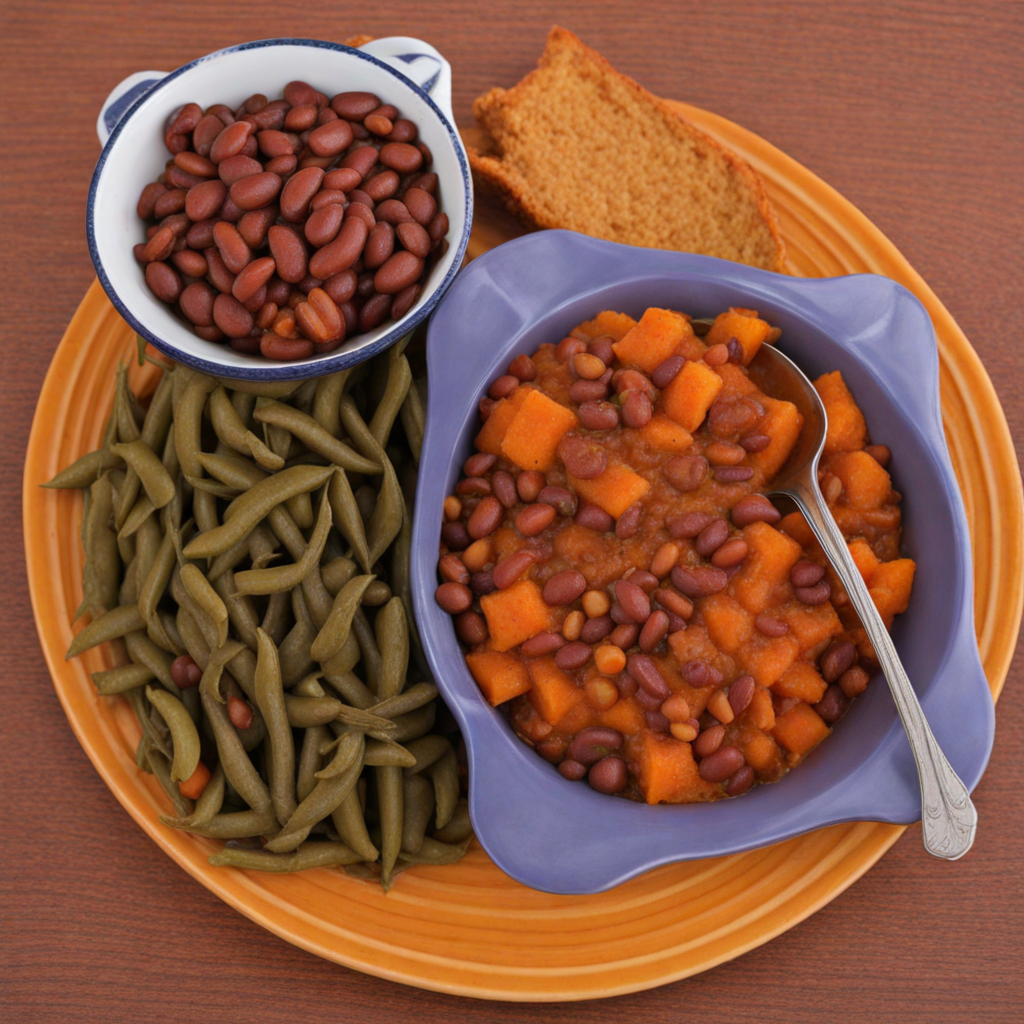Kabalagala
Kabalagala is a delightful Ugandan dish that embodies the vibrant flavors and culinary traditions of East Africa. Made primarily from ripe plantains, this dish is often described as a type of fried pancake or flatbread. The plantains are peeled, mashed, and then mixed with flour to create a smooth, thick batter that is perfect for frying. This process results in a golden-brown exterior that is crisp and slightly chewy, while the inside remains soft and tender, delivering a delicious contrast in textures that makes each bite a pleasure. What sets Kabalagala apart is its subtle sweetness, which comes from the natural sugars in the plantains. The dish is often enjoyed as a snack or breakfast item, and it can be paired with a variety of accompaniments. Commonly, Kabalagala is served with a side of peanut sauce or a rich tomato-based sauce, which enhances its flavor profile. The combination of the sweet plantains with savory dips creates a delightful balance, making it a favorite among locals and visitors alike. In addition to its taste, Kabalagala is also a versatile dish that can be modified to suit different palates. Some variations incorporate spices or herbs, adding an extra layer of flavor, while others may include additional ingredients like ground nuts or even meat for a heartier option. Whether enjoyed on its own or as part of a larger meal, Kabalagala offers an authentic taste of Uganda that invites food lovers to explore the rich culinary heritage of the region.
How It Became This Dish
Kabalagala: A Culinary Tradition of Uganda Kabalagala, a delightful and beloved dish in Uganda, serves as a testament to the rich tapestry of Ugandan culinary heritage. This traditional snack, primarily made from ripe plantains, is deep-fried to a golden perfection, resulting in a sweet, slightly crispy exterior and a soft, flavorful interior. Its simplicity belies a complex history that reflects the agricultural practices, cultural exchanges, and social customs of the Ugandan people. #### Origins of Kabalagala The roots of Kabalagala can be traced back to the indigenous peoples of Uganda, who have cultivated bananas for millennia. Uganda is known for its diverse banana varieties, including cooking bananas (often referred to as “matoke”) and sweet bananas. The country's conducive climate and fertile soil have made it an ideal location for banana farming, which has been a staple in the Ugandan diet for centuries. Bananas, particularly the East African highland bananas, are deeply integrated into the Ugandan way of life. They are not just a food source but also play a crucial role in cultural rituals and social gatherings. Kabalagala itself likely emerged as a way to utilize overripe bananas, transforming what might be wasted into a cherished treat. The name "Kabalagala" is derived from the Luganda language, where "kaba" means "to pound" and "lalaga" refers to "to mash." This is indicative of the preparation method, which involves mashing the ripe bananas before frying them. #### Cultural Significance Kabalagala is more than just a snack; it is a symbol of Ugandan hospitality and community. It is often served during gatherings, celebrations, and informal social events, making it a staple at family reunions and cultural festivals. The dish's warmth and sweetness embody the warmth of Ugandan culture itself—a culture known for its friendliness and welcoming spirit. In addition to its role in social gatherings, Kabalagala carries cultural significance as it bridges generational gaps. Traditionally, the preparation of Kabalagala was a communal activity, often involving multiple family members who would gather to mash the bananas and fry them together. This practice not only fosters a sense of community but also allows for the transmission of culinary knowledge from one generation to the next. The art of making Kabalagala, like many traditional foods, is often passed down through families, with each iteration potentially adding its own unique twist, whether through ingredients or preparation techniques. #### Development Over Time As Uganda has transformed through colonial and post-colonial periods, so too has Kabalagala evolved. During the colonial era, the introduction of new ingredients and cooking methods influenced traditional Ugandan cuisine. However, Kabalagala remained largely unchanged in its core ingredients. The dish adapted to include local spices and flavors, enhancing its taste while retaining its original essence. The late 20th century saw significant changes in Uganda's social and economic landscape, particularly following the tumultuous periods of conflict and political instability. As the nation began to stabilize in the early 2000s, there was a resurgence of interest in traditional Ugandan foods, including Kabalagala. This revival was fueled by a growing sense of national identity and pride in local culture, leading to a renewed appreciation for traditional dishes. Modernization has also played a role in the development of Kabalagala. While it is still primarily enjoyed as a street food or at home, Kabalagala has found its way onto restaurant menus, showcasing Uganda's culinary heritage to both locals and tourists. Many chefs have begun to experiment with the dish, incorporating contemporary twists, such as serving it with various dips or accompaniments, like honey, chocolate sauce, or even savory sauces. This evolution reflects a broader trend in global cuisine, where traditional dishes are reinterpreted to meet changing tastes and dietary preferences. Moreover, the rise of social media has played a significant role in popularizing Kabalagala beyond Uganda’s borders. Food bloggers and influencers have showcased the dish, providing recipes and highlighting its cultural significance, which has sparked interest among international audiences. The visual appeal of Kabalagala, with its golden-brown exterior and soft, inviting interior, makes it an ideal candidate for food photography, further amplifying its reach. #### Kabalagala in Contemporary Uganda Today, Kabalagala is often found at roadside stalls, local markets, and restaurants across Uganda. It is frequently enjoyed alongside other traditional foods, such as groundnut sauce or fresh fruits. The dish has become a symbol of Uganda’s culinary identity, representing the country's agricultural richness and the creativity of its people. In addition to its popularity as a snack, Kabalagala serves as a means of economic empowerment for many women and rural communities. Small-scale vendors often sell Kabalagala, providing a source of income while also preserving traditional culinary practices. This grassroots entrepreneurship highlights the dish's role in the broader economic landscape of Uganda. #### Conclusion Kabalagala is more than just a delicious snack; it embodies the historical, cultural, and social narratives of Uganda. From its origins in the agricultural practices of indigenous peoples to its contemporary role in promoting national identity and economic empowerment, Kabalagala is a culinary gem that continues to evolve while remaining deeply rooted in tradition. As Uganda navigates the complexities of globalization and modernization, Kabalagala stands as a reminder of the importance of cultural heritage in the culinary world. It invites both Ugandans and visitors to savor not just the flavors but also the stories and traditions that make this dish a beloved part of Ugandan culture. In every bite of Kabalagala, one can taste the history, community, and resilience of a nation that takes pride in its culinary heritage.
You may like
Discover local flavors from Uganda







